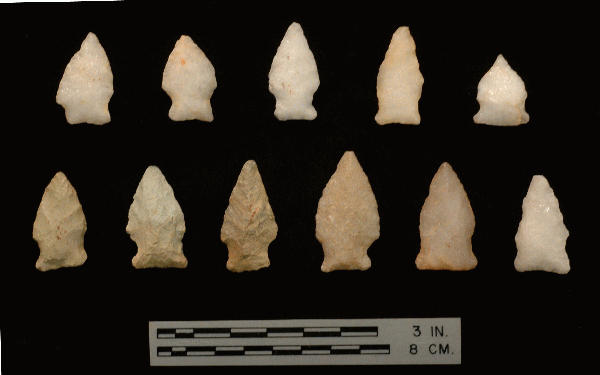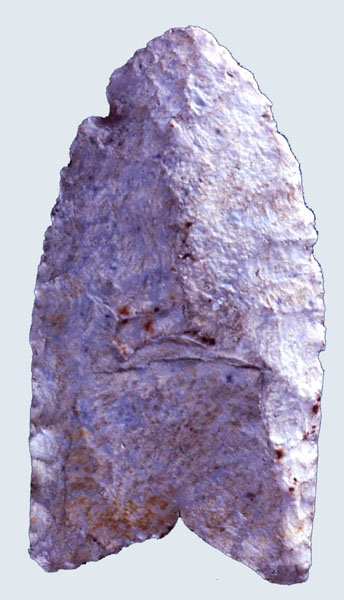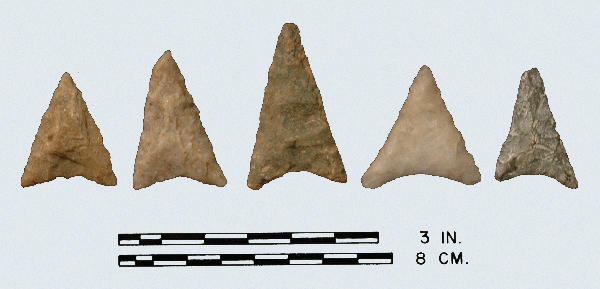
Vernon: Top Row: all quartz; Bottom Row: tuff, tuff, rhyolite, quartzite, quartz, quartz.
Type Side Notched Early Woodland
Defining Attributes
The Vernon is typically a short, thick, wide point with pronounced shoulders, constricted stem, and expanded, straight base.
Chronology
The Vernon point probably dates to the Early Woodland period, 1200 to 800 BCE, although no radiocarbon dates exist for this type in Virginia.
Description
- Blade: The blade is typically a short, thick, stubby triangle with convex edges, usually a sharp tip, and thick, irregular cross section.
- Base: The base is usually straight but some specimens have slightly convex or slightly concave bases. The stem constricts sharply from the shoulders to the midpoint of the stem and expands to a wide base. The stem constitutes 30 to 40 per cent of the total length.
- Size: Length ranges from 24 to 49 mm. with an average of 37 mm. Width ranges from 16 to 30 mm. with an average of 23 mm. Thickness ranges from 6 to 13 mm. with an average of 10 mm.
- Technique of manufacture: Crudely to moderately well made by percussion chipping and usually finished by pressure flaking along the edges or occasionally over all surfaces.
Discussion
The Vermon is a smaller version of the Halifax point, but is much later in time. Although the Vernon point is not dated in Virginia it is often associated with the Calvert point (square stem) in collection from eastern Virginia (Stephenson 1963). Both points are commonly small and made from quartz.
Defined in Literature
This type was originally defined by Stephenson (1963) based on points recovered from the Accokeek Creek Site in Maryland.
References



